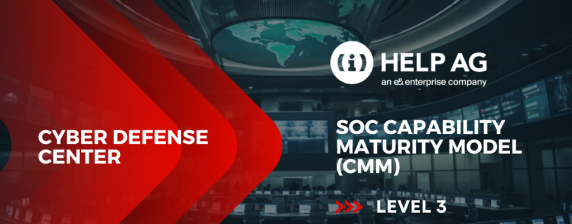The Security Risks of Service Accounts: You Can’t Protect What You Can’t See

Service accounts are crucial for automating tasks in enterprise environments, acting as non-human intermediaries for applications, systems, and services to access necessary resources like databases and file shares. These accounts typically have privileged access to perform functions autonomously. However, if poorly managed, service accounts can become security vulnerabilities, allowing attackers to exploit compromised credentials to navigate and control a network undetected.
In this post, we’ll explore what service accounts are and how they’re used and explain the security risks organizations can face if they’re not managed correctly.
What Service Accounts Are and Why They’re Important
Service accounts are specialized, non-human accounts set up by IT administrators or automatically during software installations for running automated tasks on various machines, often without human oversight. Primarily configured in Active Directory (AD), these accounts enable systems, applications, and administrators to interact with other systems like file managers or SQL servers, performing tasks such as running applications, automated backups, and database maintenance.
While they are found throughout an organization’s network, certain users, like infrastructure administrators, may use their accounts in a similar way for running scripts. The permissions for service accounts, crucial for accessing specific resources or performing tasks, are generally assigned by the creating administrator or automatically by the software’s package manager during installation.
The Security Risks of Service Accounts
Service accounts are indispensable and not immune to security risks. In recent years, threat actors have increasingly leveraged compromised service accounts to gain unauthorized access and move laterally within an organization’s network. There are several factors that contribute to the security risks associated with service accounts.
Lack of Visibility: Their complex interactions with various systems make it hard to monitor service accounts effectively, allowing attackers to exploit them unnoticed.
Password Management Neglect: Service accounts often miss out on regular password updates, which are common for user accounts, due to concerns about disrupting key operations. This oversight can give attackers prolonged, undetected access.
Excessive Privileges: Service accounts are frequently given more access rights than necessary, violating the principle of least privilege. This can amplify the damage done if an account is compromised, as attackers gain access to sensitive areas.
These vulnerabilities underscore the need for better management and security practices around service accounts.
Why It’s Important to Understand the Security Risks of Service Accounts
Although service accounts perform important functions in an environment, they can also pose critical security risks if not managed correctly.
Service accounts can inadvertently receive admin-level privileges, leading to security issues if not properly monitored, a challenge exacerbated by insufficient documentation and IT staff turnover. This lack of awareness evolves into a significant security vulnerability over time. Key challenges include:
Discovering Service Accounts: With potentially thousands in use, tracking every account and its activities is daunting, making complete security coverage difficult.
Visibility and Monitoring: Organizations struggle to fully understand service account usage, complicating the detection of unauthorized access or malicious activities. Distinguishing service accounts from regular users for monitoring purposes is also problematic, especially when accounts aren’t tied to individual users, heightening the risk of unnoticed breaches.
High Access Privileges: Service accounts frequently have unnecessary high-level access to ensure uninterrupted operations, posing a risk if these privileges are exploited in identity-based attacks.
No PAM Protection: Password Rotation is Not the Answer
Today, organizations expend considerable effort in the process of rotating passwords to mitigate the risk of highly privileged account theft, both for user and service accounts. However, this approach offers no real security benefit if the accounts are, in fact, not compromised.
Additionally, service accounts can’t be subject to password rotation for various reasons, such as the fact that they can be embedded in scripts and could break critical processes if their passwords are rotated. This would invalidate the password in the scripts, preventing the service account from accessing its target resource and subsequently breaking any process that relies on the service accounts’ task.
A more valuable approach would be to develop a deeper understanding of how accounts are utilized and then proactively respond to any changes in behavior, thereby mitigating the actual impact of a breached credential.
Mitigating Service Account Risks
To manage the potential exposures related to service accounts and address the concerns of cyber insurance underwriters, organizations can implement various risk mitigation practices. These practices include:
Auditing and Inventorying: Regularly audit to identify all service accounts, assessing their purpose, usage, and associated permissions to maintain an updated inventory and improve visibility.
Password Management: Implement policies for regular password rotation and ensure complexity to protect against brute force attacks, balancing security with operational needs.
Denying Interactive Logins: Configure service accounts to reject interactive logins, reducing the risk of unauthorized access by limiting their use to automated processes only.
Privileged Access Management (PAM): Use PAM solutions for centralized management and monitoring of privileged accounts, enforcing least privilege access to minimize risks.
Regular Review and Mitigation: Continuously review and adjust service account permissions and roles to ensure they are necessary and minimal, addressing security gaps proactively.
Monitoring and Alerting: Set up specific monitoring and alerting for unusual or malicious activity in service accounts, using machine learning to detect deviations from normal behavior and quickly respond to potential threats.
A Unified Identity Protection Solution
Help AG and Silverfort provide organizations with an end-to-end security solution for monitoring, controlling, and securing service accounts efficiently. Through our unified identity protection platform, organizations can enhance service account protection without disrupting their operational roles, by enabling multi-factor authentication and risk-based authentication. Ou solution identifies service accounts based on the repetitive behavior that sets them apart from human users. It monitors the behavior of every service account and allows you to apply suggested tailor-made access policies that will either alert the SOC team or block access upon deviation from standard behavior.
Key features include:
- Automated and comprehensive discovery of all service accounts within the environment
- Full visibility into each account’s risk level as well as sources and destinations, enabling effortless dependency mapping
- Real-time detection alerts of any deviation from the service account’s standard behavior
- Automatic suggested policies for each service account to enable alerts or protection in a single click
- Assess the risk of every authentication attempt and detect any suspicious behaviors or anomalies
The time to value for implementing our solution ranges from one week to one month, indicating a swift and efficient process for enhancing security measures





